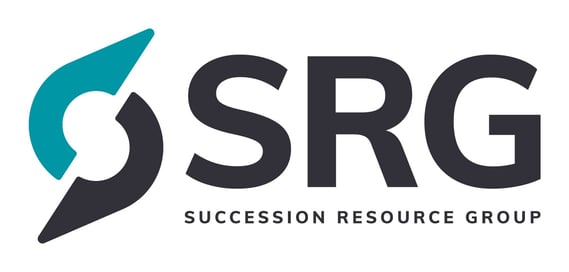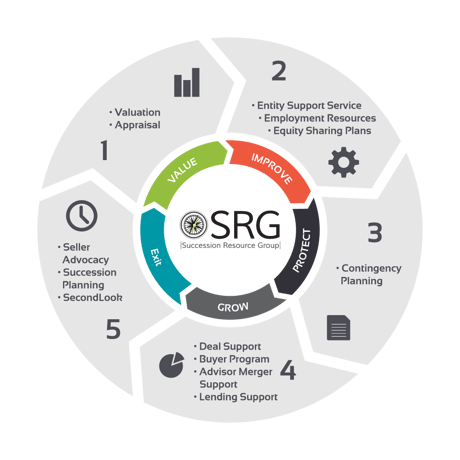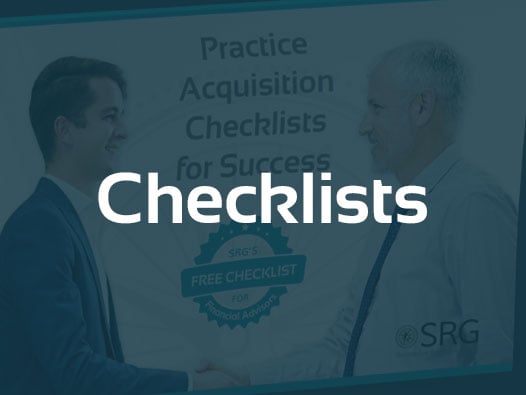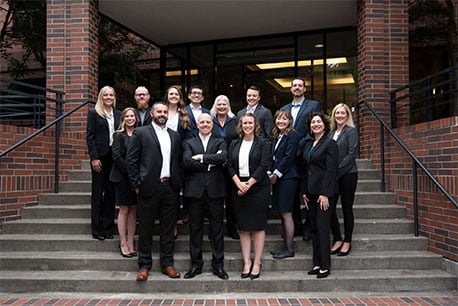The exact details of a succession planning process are determined by the size of the firm and the urgency with which successors need to be chosen. With an aging workforce, the need for speed is greater. It is less pressing when key positions are filled by younger executives.
It’s best to start succession planning early. This process should be part of the business plan for the firm, even if you’re a sole proprietor with no employees. You may not have multiple leadership positions to fill, but the business assets need to go somewhere when you’re gone.
For the sake of simplicity, we’ve compiled a list of seven steps to create a successful succession plan, regardless of the size of your firm. Consider these a building block for a more complex succession planning program if you need one. Each step can be expanded for larger firms.
Step #1: Start at the Top
If you’re a sole proprietor or partner, you have no choice but to start at the top. This becomes an estate planning exercise; for larger firms with employees, begin your succession plan with developing future leaders who can fill CEO, CFO, and other C-suite executive positions, including yours.
It’s important to communicate that what you’re doing is for the good of the organization, not a plan to replace high-level executives. In the military, every soldier knows who’s next in line when their commanding officer goes down. Succession plans set the same parameters.
Naming your successor publicly may not be the right move at this stage. Choose one of your key employees and focus on talent development with a focus on communicating institutional knowledge. In other words, groom someone to replace you.
There is another path where you don’t need to fill your position internally. Your potential successor could be someone from outside the firm who wants to take over your book of business. Selling the firm as an exit plan eliminates the need for a succession plan.
Step #2: Understand Who You Are as a Company
Choosing succession candidates is meaningless if you don’t have a sense of company identity. Who are you? Team members in key roles should know, so they can pass it on to others. Understanding the organization’s culture is critical to the business moving forward.
Executives in key positions tend to focus on the nuts and bolts of the succession planning process. The part that is far too often overlooked is the corporate identity piece. Assigning a successor who isn’t immersed in the culture of a firm is essentially the end of that firm.
One of the best ways to define identity and culture is to ask for feedback from employees. If you interview ten employees in critical positions and they all have different views on the subject, you have a problem. Define those elements and share them across the company.
Step #3: Evaluate the Needs of Your Clients

The best leaders within the organization are those who put the needs of clients first. Your clients are your lifeline. Without them, there would be no need for a succession planning strategy or employee development. Your business would not exist.
Effective succession planning must include strategic objectives centered around client service. This is an expansion on your company identity. Define your processes for onboarding and communicating with clients. What are the critical roles in those processes?
Successful firms create company handbooks that speak to the issues of culture, mission, vision, and a code of ethics for dealing with clients. If you don’t have one of those, create one. The handbook can help succession candidates facilitate a smooth transition when you’re gone.
Step #4: Identify Key Positions with an Organizational Chart
The term “succession planning” suggests there needs to be an actual written plan somewhere. One of the key elements of that plan is an organizational chart that identifies key positions. This is the stage of succession planning where you need to create one of those.
Identifying positions is the first step. Start at the top, which is you. Go down the list to include senior and middle management, assistants, admins, and interns. You’re not assigning names just yet. This is just a chart of your organization. You’ll add team members later.
Certain positions may be vacant. Add them anyway. The completed work may show you areas where you can streamline or need to expand. If you’re a solo practitioner, you’ll be doing a different type of chart, one that lists other professionals with succession potential.
Once the chart is done, add the name of each key employee and the obvious successor for that person should they move on or move up. Write the first draft in pencil. You may want to make some changes after you complete the next two steps listed here.
Step #5: Create a Succession Plan for All Critical Roles
This may seem redundant after completed Step #4, but it’s a different task entirely. The chart of your organization shows the person in each position and other promising employees who can advance in the company. Role-specific succession planning is more detailed.
Only firms with multiple employees and a corporate structure need to do this. Each employee should be given a personal development plan when they assume a new position with your company. It shows business objectives, expectations, and the path to advancement.
This essentially creates a talent pipeline where each employee is looking up and aspiring to the next rung of the corporate ladder. For firm managers, this type of documentation also helps in the development of a hiring strategy going forward.
More creative firms give their internal talent the option of cross-training to become qualified for other positions, giving them more than one route to the top of the corporate ladder. From a business perspective, interchangeable parts give the firm a competitive advantage.
Step #6: Interview Everyone, Including Senior Executives

Let’s call this the “check your instincts” step. You’ve made your own list of how you feel the company succession planning should look. Now it’s time to go out and interview all your people, evaluate employee performance, talk about career pathing, and discuss future roles.
This part of the process includes regular employees, staff members, and executives, so it’s going to take some time. As in the previous steps, start from the top and work down. Keep good notes because you’ll want to set up a job shadowing program when you’re done.
Once the interview is done, write down the current title and your thoughts on where that employee is going in the near future and further on down the line. Are they a good fit for a leadership role? Put the high potential workers on a shortlist.
Don’t ignore the new employees. They may have some of the abilities required for leadership down the road. Identify key areas where they show aptitude and ask them if there are any new skills they’d like to learn on the job. Get to know them. It’s important.
Step #7: Allocate Assets and Assign Responsibilities
After Covid-19, the whole “get hit by a truck” scenario doesn’t seem so far-fetched. Hope for the best, but plan for the worst. If you’re incapacitated or simply don’t wake up one morning, who inherits your wealth? What happens to your company?
These are not questions that you want to ask during the course of a normal business day, nor do you want to look at upper management and wonder who’s going to replace you when you’re gone. You have the power to decide that right now.
Make a list of all your assets and allocate each of them to a successor, then choose someone to act as an executor to make sure your wishes are honored. If you’re a sole proprietor, find another advisor to care for your clients if something happens.
Succession planning should not be overlooked and never put off until later. Life is too unpredictable. One of your career goals was to own your own firm - the next step is to leave a legacy. Proper succession planning can help you accomplish that.
